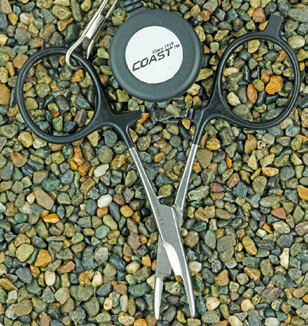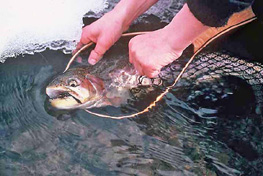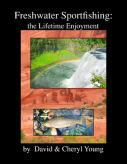Responsible Bait Fishing
I believe that catch and release can be practiced using bait fishing. Fish can be safely released by using reasonable care.
I’ve discovered that barb-less and micro-barbed, thin wire hooks catch far more fish than standard barbed hooks. Simply, their smaller profile and sharp point sinks readily into the fish’s oral cavity. I also use the smallest hook that will hold the bait. Rarely do I use treble hooks. The single barb-less hook is the way to go.
A swallowed hook is not a fatality. Clip the leader off short and avoid pulling on the hook. Leave it in place and Mother Nature will work it free. Also, steel hooks rust out quickly, especially thin, light wired ones.

Use the same forceps a fly fisherman uses. Clamp down on the shaft right behind the hook’s eye and back out the barb-less hook.
Play out a fish as quickly as you can. Avoid tiring the fish because in a long battle, the fish may build up lactic acid in its system and this is detrimental to its survival.
Handle the fish carefully. Don’t squeeze or damage its gills with your fingers. Tip the fish upside down because this disorients the fish and reduces its struggles. Open its mouth and quickly remove the hook. It’s best to handle the fish while it’s in the water so oxygenated water is running through its gills. Only lift it out of the water for a quick photo if necessary. But I believe that fish photos look better when the fish is in its watery environment. So I lay the fish on its side in the water for most of my photos. I use a polarized filter on my camera that cuts the water’s surface glare. All of the natural


coloration is then in place.
If a fish appears stressed, give it artificial fish respiration by holding it upright with its mouth open and allow water to run through its gill plates. A back and forth agitation of the fish allows more water to run over its gills. Gills are the fish’s lungs; that is where water is taken up and carbon dioxide is released. Once the fish is lively, allow it to swim back into a safe place in its environment.
Be attentive when bait fishing. Set the hook quickly during the bite; don’t give the fish time to swallow the bait. This helps reduce gut hooking. Obey the fish and game regulations. Keep only the fish that you will immediately consume. Limit your kill, or practice catch and release all together.
It’s unfortunate that some fly fisherman can be elitist snobs. They may look down on you upon seeing your can of worms. This is like a scene out of the movie “A River Runs Through It.” Be patient with

those snobs and practice angler etiquette at all times. The golden rule really works.
I’ve been an avid fly fisherman for more years than I can admit. But I still recall my youth when I was a bait fisherman. I learned more from bait fishing than most snobs could believe. I love the early spin tackle lures, hooks, and bait containers. Recently I’ve returned to my roots. I love to take my grand kids bait fishing.

© 2025 The Gale Group, Inc. All rights reserved.
© 2025 Perigee Learning LLC. All rights reserved.
LoveTheOutdoors.com is owned and operated by Advameg, Inc. © 2025 Advameg, Inc.
Camping Adventures • Dutch Oven Cooking • Sports Knots
Fly Tying • Freshwater Fishing • Fly Fishing

